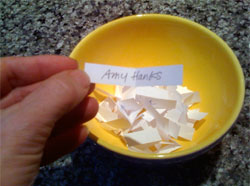 Wow! So many lovely and poetic comments about winter! Thanks to eveyone who entered — Amy Hanks is the winner of my book Winter along with an instruction sheet for making the crown and blizzard binding. Wow! So many lovely and poetic comments about winter! Thanks to eveyone who entered — Amy Hanks is the winner of my book Winter along with an instruction sheet for making the crown and blizzard binding.
|
 Wow! So many lovely and poetic comments about winter! Thanks to eveyone who entered — Amy Hanks is the winner of my book Winter along with an instruction sheet for making the crown and blizzard binding. Wow! So many lovely and poetic comments about winter! Thanks to eveyone who entered — Amy Hanks is the winner of my book Winter along with an instruction sheet for making the crown and blizzard binding.
|
Paper engineer Matt Shlian also makes large paper sculptures and his website has videos of some of his work in motion (including a few books).
I’m just a sucker for weird symbols and numbers. The left clock has an explanation of each expression underneath it. “3” is represented by π (3.14…) and a blue dot on the outside of the circle where the numerical value would fall (just below the 3 position). The other expressions are the same way (for example “6” is Avogadro’s number, which is 6.0221415 × 10^23.) The right one isn’t as clever about the expressions and placement, but I think I like the symbols just as well!
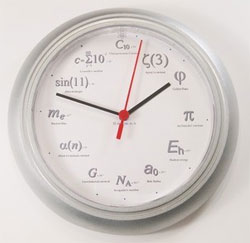 |
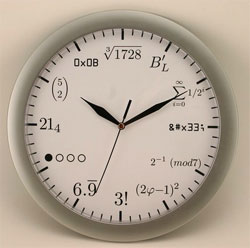
|
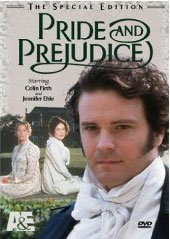 I’m not quite sure who would want to see this movie or read these books — but then again I’m not the audience for the “Twilight” books and I definitely haven’t seen enough “Buffy” reruns — what do you think?
I’m not quite sure who would want to see this movie or read these books — but then again I’m not the audience for the “Twilight” books and I definitely haven’t seen enough “Buffy” reruns — what do you think?
From The New York Times (Dave Itzkoff):
![]()
For some viewers, the idea of another Jane Austen-inspired period drama is sufficiently monstrous, but a coming film project seeks to update the formula with actual monsters, Variety reported. The movie “Pride and Predator” … will juxtapose brooding aristocrats with a brutal alien that lands in 1800s-era Britain, attacking residents and leaving them with neither sense nor sensibility. The film, to be produced by Elton John’s Rocket Pictures, is the latest work to mix the hoary costume genre with elements of horror. A book called “Pride and Prejudice and Zombies,” credited to Jane Austen and Seth Grahame-Smith and published by Quirk Books, will combine the Austen novel with “all-new scenes of bone-crunching zombie mayhem.” And a coming novel by Michael Thomas Ford called “Jane Bites Back” depicts the 19th-century author as a frustrated vampire, taking revenge on those who have made money from her work.
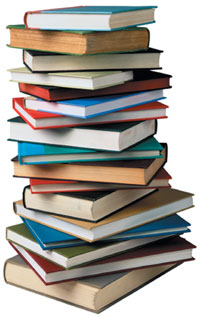 In this post, I wrote about the new law in the US that required, after Feb 10, 2009, that all children’s products sold in the US must be certified they meet specific lead levels. As written, the law includes books, and is retroactive, so existing and used books would also need to be tested and certified. There was lots of confusion and concern from libraries, thrift stores, publishers and non-profits about how exactly the law effects them (would libraries need to close their childrens’ rooms?)
In this post, I wrote about the new law in the US that required, after Feb 10, 2009, that all children’s products sold in the US must be certified they meet specific lead levels. As written, the law includes books, and is retroactive, so existing and used books would also need to be tested and certified. There was lots of confusion and concern from libraries, thrift stores, publishers and non-profits about how exactly the law effects them (would libraries need to close their childrens’ rooms?)
![]() Since I wrote that post, the Consumer Product Safety Commission (CPSC, which administers the law) has said they would “not impose penalties against anyone for making, importing, distributing or selling” a list of specified products, including “an ordinary children’s book printed after 1985.” That’s good news for me — my flip books are new. However most libraries have lots of books printed before 1985 in their children’s section and it’s not unusual for small independent booksellers to have old children’s books as well. In the extreme, there are reports on Etsy of thrift stores just throwing away their older children’s books. Publishers and booksellers submitted enough evidence to convince the CPSC that “ordinary children’s books” printed before 1985 don’t contain lead, and I hope they are able to further persuade them to exempt pre-1985 too — it would be a shame not to be able to buy children’s books that are now out of print.
Since I wrote that post, the Consumer Product Safety Commission (CPSC, which administers the law) has said they would “not impose penalties against anyone for making, importing, distributing or selling” a list of specified products, including “an ordinary children’s book printed after 1985.” That’s good news for me — my flip books are new. However most libraries have lots of books printed before 1985 in their children’s section and it’s not unusual for small independent booksellers to have old children’s books as well. In the extreme, there are reports on Etsy of thrift stores just throwing away their older children’s books. Publishers and booksellers submitted enough evidence to convince the CPSC that “ordinary children’s books” printed before 1985 don’t contain lead, and I hope they are able to further persuade them to exempt pre-1985 too — it would be a shame not to be able to buy children’s books that are now out of print.
The first books I designed were ABC books, so I seem to gravitate toward anything alphabetical. These Young Mad Scientist’s ABC blocks from xylocopa are appropriately silly. They say “we have noticed that there is absolutely no training in the K-6 grades that prepares students to become mad scientists. In this competitive 21st-century world, the need for mad scientists will only increase, but the lack of basic education in primary school leaves us concerned that there will be no future students capable of leading in this illustrious field.” Here’s a list of the images (I especially like C) and then the blocks with their old-fashioned letters and illustrations.
|
A – Appendages B – Bioengineering C – Caffeine D – Dirigible E – Experiment F – Freeze ray G – Goggles H – Henchmen I – Invention |
J – Jargon K – Potassium L – Laser M – Maniacal N – Nanotechnology O – Organs P – Peasants (with Pitchforks) Q – Quantum physics R – Robot |
S – Self-experimentation T – Tentacles U – Underground Lair V – Virus W – Wrench X – X-Ray Y – You, the Mad Scientist of Tomorrow Z – Zombies |